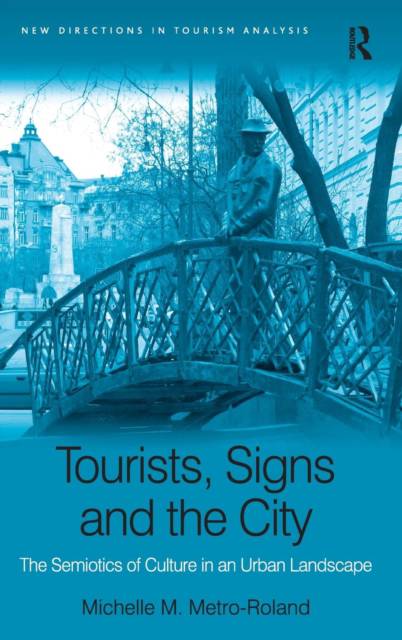
- Afhalen na 1 uur in een winkel met voorraad
- Gratis thuislevering in België vanaf € 30
- Ruim aanbod met 7 miljoen producten
- Afhalen na 1 uur in een winkel met voorraad
- Gratis thuislevering in België vanaf € 30
- Ruim aanbod met 7 miljoen producten
Zoeken
€ 290,45
+ 580 punten
Uitvoering
Omschrijving
Drawing upon the literature of landscape geography, tourism studies, cultural studies, visual studies and philosophy, this book offers a multi-disciplinary approach to understanding the interaction between urban environments and tourists. This is a necessary prerequisite for cities as they make themselves into enticing destinations and compete for tourists' attention. It argues that tourists make sense of, and draw meaningful conclusions about, the places in which they tour based upon the interpretation of the signs or elements encountered within the built environment, elements such as graffiti and lamp posts. The writings of the American pragmatist Charles S. Peirce on interpretation provide the theoretical model for explaining the way in which mind and world, or thoughts and objects, result in tourists interacting with place. This theoretical framework elucidates three applied studies undertaken with foreign visitors to the Hungarian capital of Budapest. Based upon extensive ethnographic field work, these studies focus on tourists' interpretation of the urban landscape, with particular attention paid to the encounters with national culture, the role of architecture and the importance of the prosaic in urban tourism.
Specificaties
Betrokkenen
- Auteur(s):
- Uitgeverij:
Inhoud
- Aantal bladzijden:
- 182
- Taal:
- Engels
- Reeks:
Eigenschappen
- Productcode (EAN):
- 9780754678090
- Verschijningsdatum:
- 28/09/2011
- Uitvoering:
- Hardcover
- Formaat:
- Genaaid
- Afmetingen:
- 156 mm x 234 mm
- Gewicht:
- 435 g

Alleen bij Standaard Boekhandel
+ 580 punten op je klantenkaart van Standaard Boekhandel
Beoordelingen
We publiceren alleen reviews die voldoen aan de voorwaarden voor reviews. Bekijk onze voorwaarden voor reviews.











